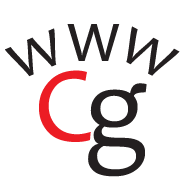
Revealing the SECRETS of Marketing Strategy
While responding to your pain points
We asked you what your marketing strategy pain points are.
You answered (thankfully, otherwise we would have looked pretty stupid).
Numero uno is this one:
‘I feel like few people have the overall strategy in place and focus rather on one section of what their
– Edel Hayes
marketing could be, so for example social media is the focus rather than thinking about it as just part
of the overall plan’.
Yeah. Major ouchy.
So how can you create a cohesive marketing strategy where social media or indeed any tool is the focus and not the steer?
You could start with a stategy OR if you’re just getting used to strategic thinking for now, then here are a few things to think about.
How Much Can You Chew?
So it’s all good and well creating accounts on every social media channel that is accessible and free to set up on. But there’s only so much you can achieve if you’re one person or a very small team, and you now have 20 channels to publish ‘winning’ content on.
This will ultimately lead to:
- Social overwhelm
- A content crisis
- Nothing else getting done
- Sick and tired of marketing
So, the rule of thumb to avoid the above is simple.
Start with two social media accounts. You can add email too, as you can re-purpose your social media content for your email.
And choose them based on:
Fit
Having a facebook page, twitter account, mailchimp account for email sending, does not automatically equal conversions, sales, clients, leads, partnership deals. Nope.
Nor does it mean that these tools are the best fit for you and your business.
At a recent networking event, a few ladies asked me if my marketing business was on Facebook.
No it isn’t. I can confidently say that it isn’t because my target audience are business owners and not really interested in talking about marketing consultation while on Facebook. Facebook is ideal for consumer marketing, so if you are a beautician that specialises in wedding makeup – Facebook is a great fit. I would recommend you consider it. If you’re a life coach. Facebook is a good fit.
That’s not to say that all b2b fails on Facebook, just that it isn’t a natural fit if FB users are thinking of the personal while browsing.
So – fit is super important.
Fit considerations:
- Does this suit my current needs (and scalable for some growth)?
- Are my target audience here? (If unsure, read next part)
- Do I have resources and skills to successful market here?
- Is training required (if so, cost/time)?
Fit can also apply to supportive software – which is worth considering alongside your marketing strategy to manage your contacts and content.
- If a CRM/CMS, is this saving me time? Does it have the minimum features I need?
- Does it fit my budget? (A general rule of thumb is 20% of turnover and 80/20 divide with 20 for new/experimental marketing)
Who Are You Targeting?
How much do you know about the people that purchase your products, use your services or that could
become partners or supporters?
The more detail; the easier it will be to market to them.
Profiles are so much fun. They are. You get to deep dive into the heads of the people who will be your customers. We use the deep dive method and the character development method used by fiction writers.
- Who are they? Gender, age, life situation (single, engaged, married, divorced), parents, CEOs, researchers, website developers?
- Where are they? Are they in your locality, overseas, do they hang out at certain places on a regular basis (online/offline)?
- What it is about them that meets your objectives/targets? Are they people that donate to charity often, do they have children that need something you are offering, are they dog owners, are they preparing for a wedding?
- What do they need? [This one is real important]. Do they need a wedding venue, an educational toy for a child with autism, something for their dog to eat, a place to hang out that serves the food they adore?
Can you create a character that reflects your idea profile?
John is 48. He has a wife and five children. One from a previous marriage when he was just 19. He’s worked hard his whole life to support everyone, but as he’s getting older (and his kids are now 20, 22 (twins), 25 and 29), he has began to worry about the future. Before now, it was head down, work, work work, but John is looking for more in his life and has realised that he has been neglecting himself.
Over to you (yes, you dear readers…. pay attention).
What does John need do you think?
Do we have enough information? If not, we continue with his story.
John had so many dreams as a kid. He had planned to travel the world. His Dad had been a sailor and would tell him all about his adventures in the far east. John had been saving to travel around Singapore, Thailand and China, before he met his first wife Marie. And then she was pregnant with JP and suddenly his life was get a job, save for a house and get married. So that’s what they did, but on Sunday afternoons, when Marie and JP would meet her Mam for a walk and lunch, he would think about that untaken trip. He had even managed to convince Marie to take a two week holiday in Thailand. A taster.
And then tragedy hit. Marie was driving back from a trip to Belfast with a few friends. She should have been home by 10pm, but she never made it back. After that John felt guilty for his dreams. But of late, they had began to float back.
Have a better idea of what John needs?
If you’re selling cruise packages to Asia or short-term teaching posts in Singapore – then John might look a lot like your target audience.
Ok, so the story above is somewhat elaborate. However, the idea is to ‘get to know’ your target inside and out. That level of detail is vital in order to win over your competition.
Note down all of this criteria.
[I’m creating a Masterclass on profiles and how to use the character developement method, so if this is something you wish to learn more about – comment with ‘masterclass profile’ and I’ll make sure to contact you when it’s live).
Match Profiles to Platforms
These days it’s all about social media, so here are the main social media players for UK/Ireland with some details to help you match your profile/s to the platforms.
- 55% usage per day.
- Broad audience, age range – mid 30s to 70.
- High user retention rates (sticky content = holds people for longer).
- More space for post text. Can add # tags (this is helpful as it groups
- updates under a tag that users can search for).
- Introduced video reels (after popularity on Instagram).
- Can create a shop for ecommerce. Marketplace for selling.
- Slowly declining, but high value for 2023/2024 at least.
- 63% daily usage. FB owned so you can manage both accounts on Facebook (to a point).
- Video/visual-led.
- Link limited to bio page (unless you use a third party account to list
- links such as LinkTree.)
- B2C but you can creativily access B2B too.
- Usage increasing with popularity of reels and shopping.
- Ability to share reel audios and visuals is novel and has the capacity to widen reach.
- More creative and informal. Emphasis on tags, captivating videos and audios.
- Place for professionals and businesses, business networking groups and communities.
- Ideal for Business to business (B2B), building partnerships and collaborations.
- Formal for the most part, although authenticy is appreciated.
- Started out as a digital CV. Now has a range of features to showcase your achievements and successes.
- Can attach publications, papers, presentations, be open to work collaborations and job offers.
- Note: Profiles are for individuals, while business pages represent businesses.
- Great for building personal authority and using your individual voice.
- Idea for any person, but consultants, coaches, business owners, public speakers and those that have a self-focus do tend to do well here.
- Steady growth.
TikTok
- Major growth 2022 and set to rise.
- Teens, tweens and under 25s mainly (although if more 25+s join, the younger audience will
- break away).
- Focus on serving match content to users and influencer marketing.
Time is a Resource
Every piece of software, every tool, every platform, is different. Every time Facebook or Instagram makes a change, you have to learn all about it. This is another reason why only choosing a few tools/platforms is best. You can comfortably manage your activity and update your knowledge each time there is a change.
This level of knowledge takes time and patience.
If you have created your profile/s and matched the best platforms to them, then shelve the others.
Time is a valuable resource – yours and other peoples.
If you focus on developing high-value content on two channels, you’re liklihood of a conversion increases.
Best to opt for quality over quantity.
We’ve covered profiles, social media fit (software by extension), and time. These are simply a few considerations and helpful for adjusting your marketing so that it’s more strategic on social media at least.
When developing a comprehensive strategy we would start with research (market, SWOT, competitor), then look at resources (team/time/skills), set profiles and stories, select best places (online/offline) and use this to get creative and plan what to do in all those places. Finally we note KPIs and how to gain insights on activity, in order to assess performance. As opposed to being platform/tool-led, a strategy would evaluate your unique set up and be based on what is more likely to work.

We can help you:
- Brainstorm ideas and create an online strategy
- Provide templates to support your online planning
- Manage your digital communications each month and give you first-class mentoring
Email us at strategy@cgomarketing.com for details.


Add A Comment